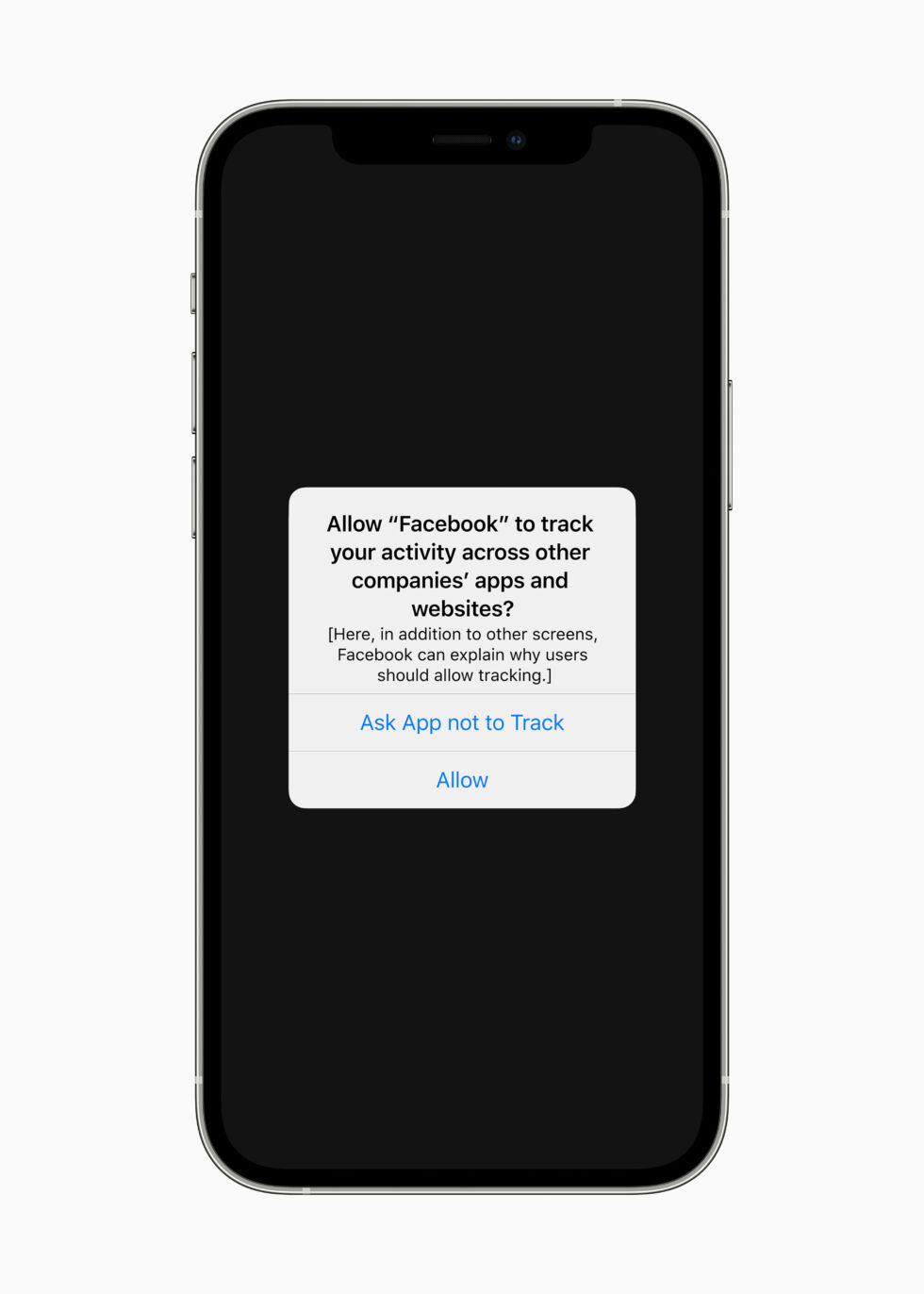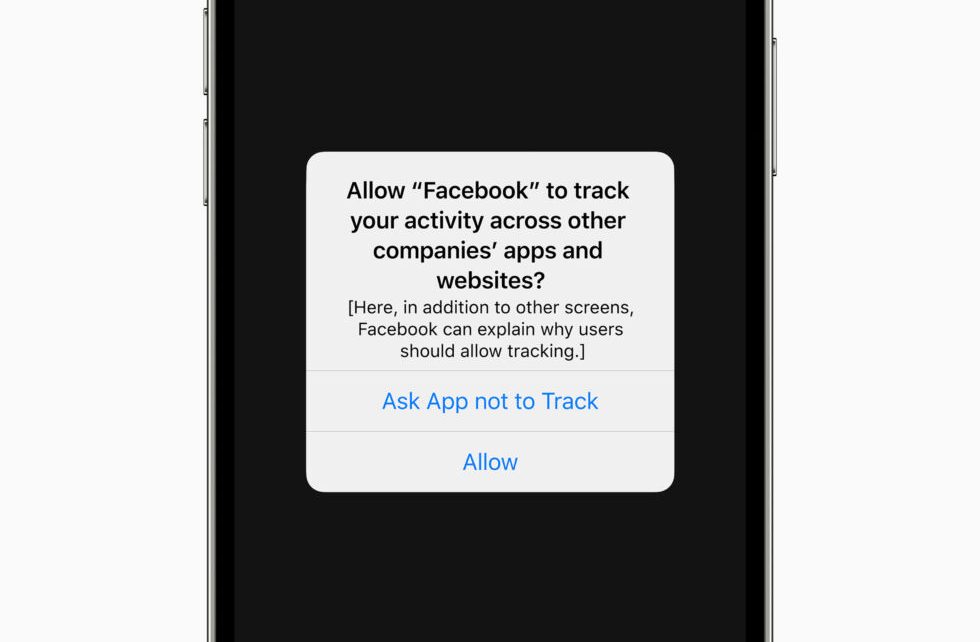-

A mockup of the tracking confirmation that Apple included in its company blog. Note that it uses Facebook as its example. [credit: Apple ]
This week, Apple published a new white paper that describes the ways apps typically track users and handle their data, outlines the company’s privacy philosophy, and offers several details and clarifications about the upcoming App Tracking Transparency change, which will (among other things) require app developers to get a user’s permission to engage in the common practice of creating an identifier (called IDFA) to track that user and their activities between multiple apps.
The paper states that the change will go fully into effect with the release of an update to iOS and other Apple operating systems in “early spring” (Apple has previously said this would happen in iOS 14.5, which is now in a late stage of beta testing) but the company has reportedly already started enforcing some aspects of the new policy with new app submissions, suggesting that the full transition is very imminent. One recent survey found that only about 38.5 percent of users plan to opt in to tracking.
Most of the paper is dedicated to explaining exactly how apps track users to begin with, by using a hypothetical example of a father and daughter traveling to the playground with their personal mobile technology and apps in tow. There are no new revelations in this section for people who are already familiar with how these systems work, but the information is accurate, and most people don’t actually know all that much about how their data is tracked and used, so it might be useful to some.





